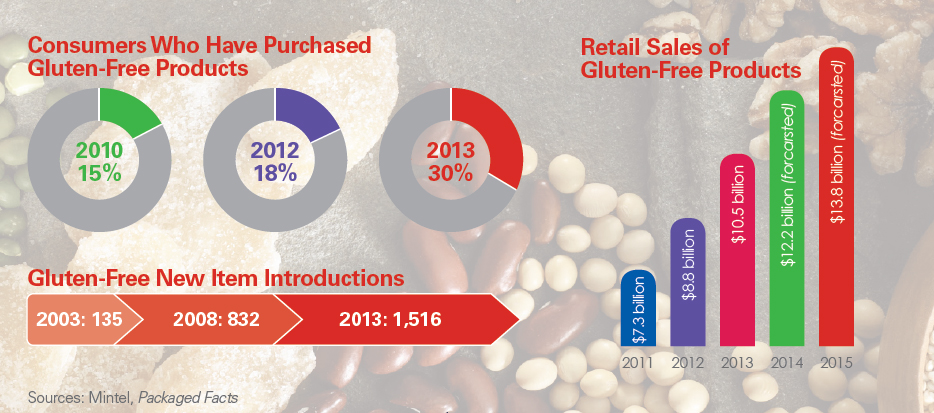Just a few years ago, gluten-free foods were limited to specialty stores and mainly sought out by the 1 percent of the population suffering from celiac disease, a disorder in which gluten (found in wheat, barley and rye) causes damage to the small intestine. Fast forward to today and there’s a good chance that you or a loved one has purchased gluten-free products recently even if celiac disease isn’t a concern. According to market research firm The Hartman Group, 30 percent of consumers tried gluten-free products at some point in 2013, and nearly 8 percent have adopted fully gluten-free diets. Research firm Mintel reports the market saw over 44 percent growth from 2011 to 2013.
Given this, it’s little surprise that retailers and brands are hopping on the gluten-free bandwagon. But as it turns out, consumers are looking for more than just a “gluten-free” label slapped on the side of a package as these products go from niche collections to the mainstream aisles.
To start, it helps to understand what’s driving the gluten-free craze. By and large, it’s based on the belief that gluten-free (and other “-free”) products are healthier, more natural choices. Some also choose gluten-free diets in an effort to lose weight. All in all, these are highly engaged and informed consumers who are very choosy about the products they buy.
Strong opinions also follow through to what consumers want to see on shelves when it comes to gluten-free products. According to Mintel, 51 percent of consumers say a dedicated gluten-free aisle is an important purchase influencer. When incorporated into mainstream aisles, 46 percent say they’re influenced by shelf tags or icons on product packages that identify them as gluten-free. Promotions and sampling events can also have an important impact on buying behavior for over 40 percent of shoppers. There’s also one thing many shoppers don’t want to see: foods that don’t normally have gluten anyway (such as fruits, meats, milk or spices) being labeled as gluten-free.
There is some caution in the air regarding the move to all things gluten-free, though. According to The Hartman Group, consumers are coming to realize they don’t necessarily need to ban gluten in order to avoid processed carbs. And certain brands have begun offering artisanal breads and baked goods made from special, less processed versions of grains, which may encourage a “real bread revival” just as gluten-free goes mainstream. If nothing else, this is a reminder that, like a healthy diet, retail shelves should be geared toward moderation.


